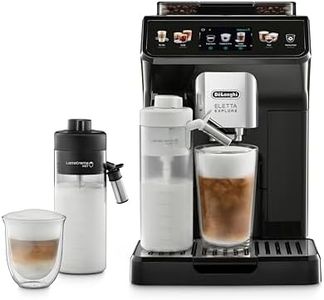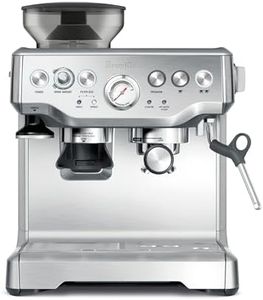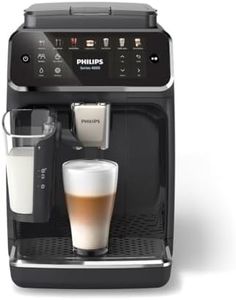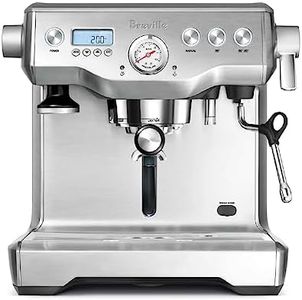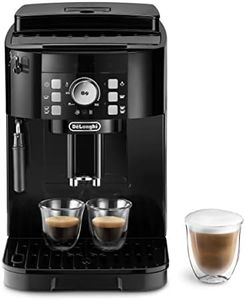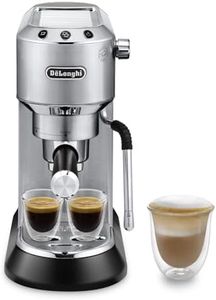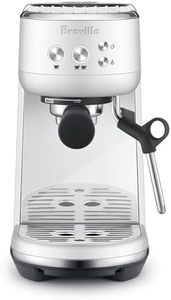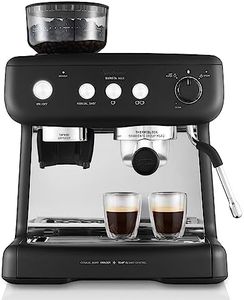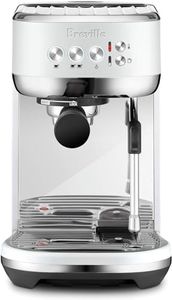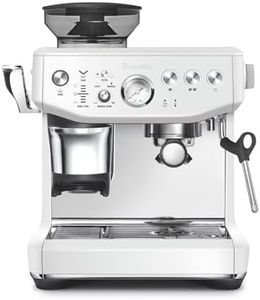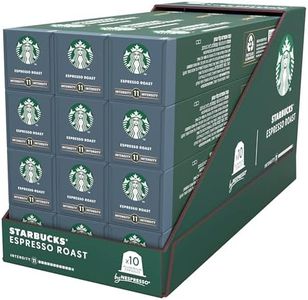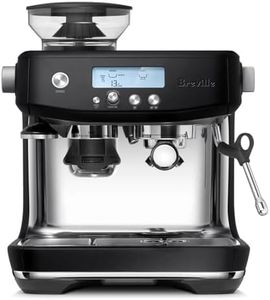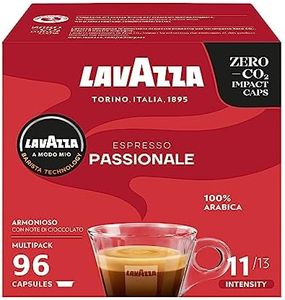We Use CookiesWe use cookies to enhance the security, performance,
functionality and for analytical and promotional activities. By continuing to browse this site you
are agreeing to our privacy policy
10 Best espressos
From leading brands and best sellers available on the web.Buying Guide for the Best espressos
Choosing the perfect espresso machine can greatly improve your coffee experience at home. Whether you’re a total beginner or a passionate coffee enthusiast, you should focus on how involved you want to be in the brewing process, how much control you need over your coffee, and how convenient you want your routine to be. Understanding key features will help you find a machine that fits your habits, kitchen space, and desired learning curve.Type of MachineEspresso machines come in several main types: manual, semi-automatic, automatic, and super-automatic. Manual machines give you complete control over brewing but involve a learning curve and hands-on operation, making them great for enthusiasts who enjoy the process. Semi-automatic machines automate water flow but still let you manage grinding and tamping, ideal for those who want some involvement. Automatic machines handle both water flow and timing, offering consistency with less effort. Super-automatic machines do everything from bean grinding to brewing at the touch of a button, making them perfect for users who value simplicity and speed. Decide how much time and attention you want to give your morning coffee ritual.
Boiler TypeEspresso machines typically use single boilers, dual boilers, or heat exchange systems. Single boilers can brew coffee or steam milk but not both at once, making them suited for those who don’t mind a bit of waiting. Dual boiler systems allow you to steam and brew simultaneously, perfect for entertaining or making multiple drinks quickly. Heat exchange boilers also enable brewing and steaming at the same time and are often found in mid- to high-range machines. Pick based on whether you often make milk-based drinks or frequently entertain guests.
PressurePressure, measured in bars, controls how water is forced through the coffee grounds to create espresso. Standard espresso is usually brewed at around 9 bars, though machines often advertise higher max pressures. Too little pressure results in weak espresso, while too much may cause over-extraction. For most users, a machine offering stable 9 bars is sufficient; extra high-pressure machines may not offer real-world benefits. Always check if the pressure is consistent during brewing.
Milk Frothing CapabilitySome espresso machines have steam wands for manual milk frothing, while others have automatic frothers. Manual steam wands give you more control over the milk’s texture, ideal for latte art and customization, but require practice. Automatic frothers or steam systems handle the work for you, great for those who want cappuccinos or lattes without any hassle. Choose based on how often you drink milk-based coffees and your interest in hands-on frothing.
Size and Water Tank CapacityMachines come in various sizes, from compact for small kitchens to large for more permanent setups. Water tank capacity determines how often you'll need to refill—smaller tanks are suitable for single users or occasional drinkers, while larger tanks are better for families or offices. Consider your available counter space and how often you’ll be making drinks in a row when making your choice.
Ease of CleaningEspresso machines need regular cleaning to maintain performance and coffee flavor. Some machines have removable parts and easy-clean cycles, while others require more disassembly and manual care. If you want a low-maintenance routine, choose a machine designed with cleaning in mind. Frequent drink makers should look for options that simplify daily upkeep.
